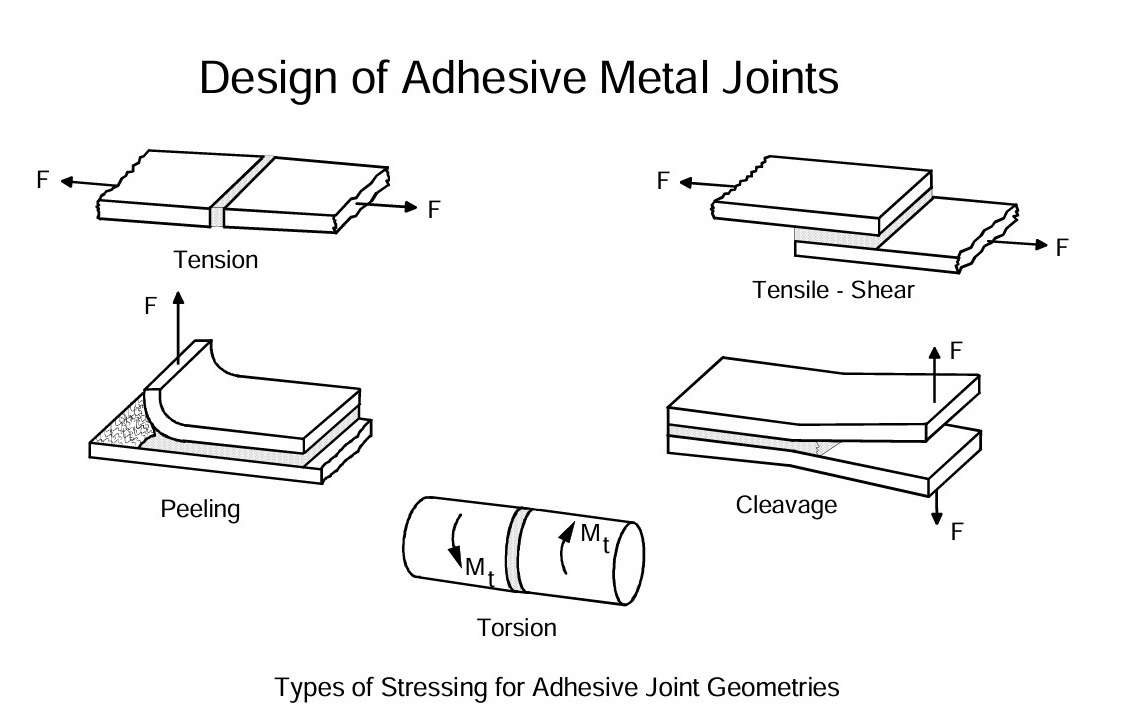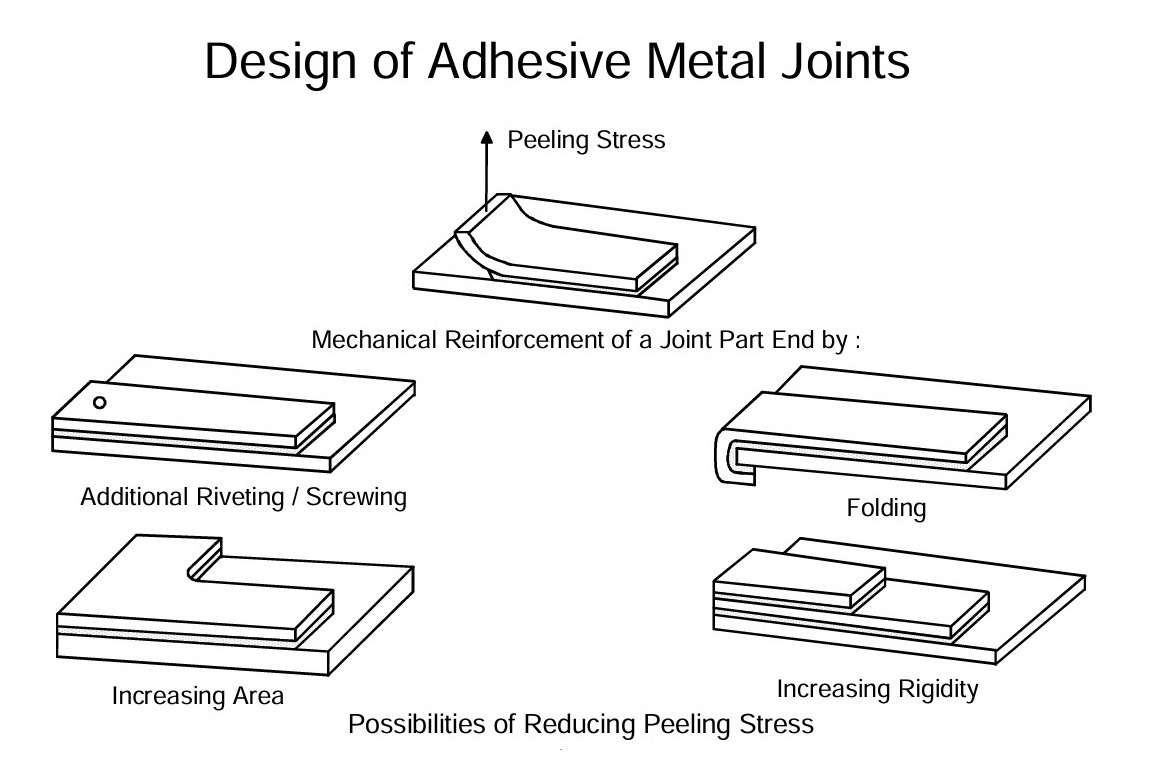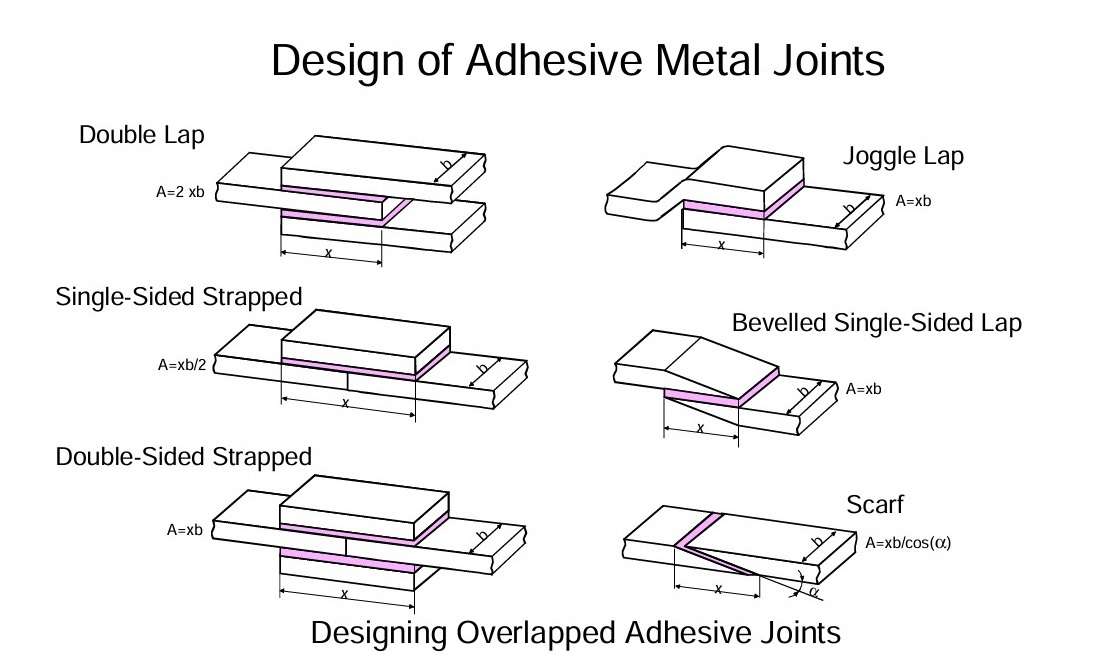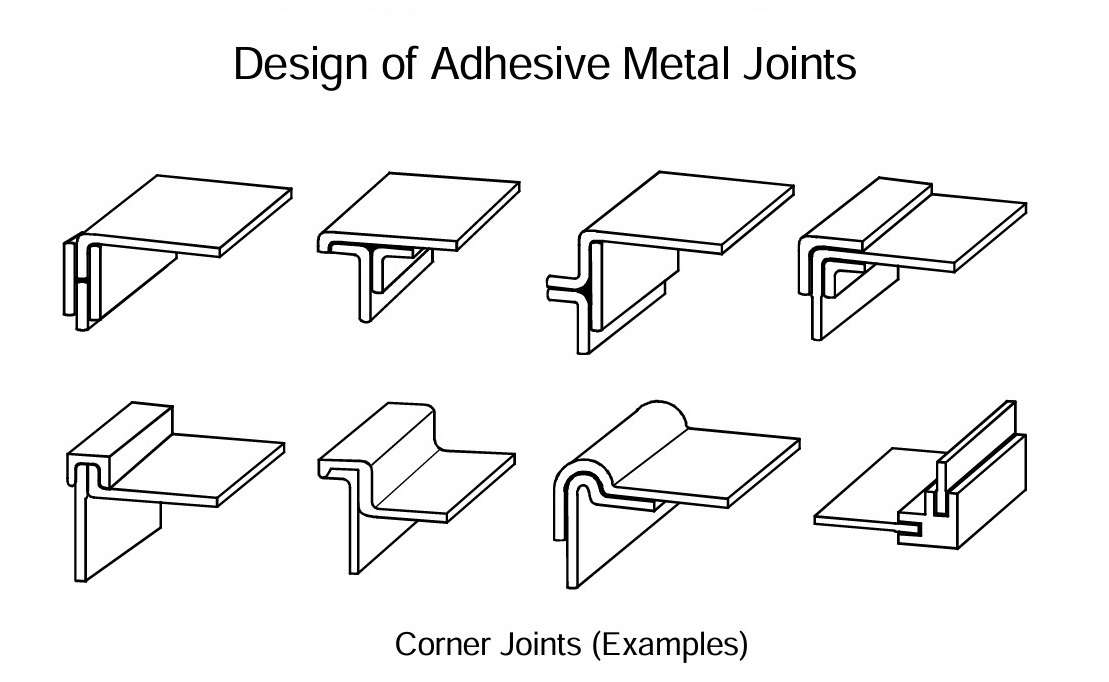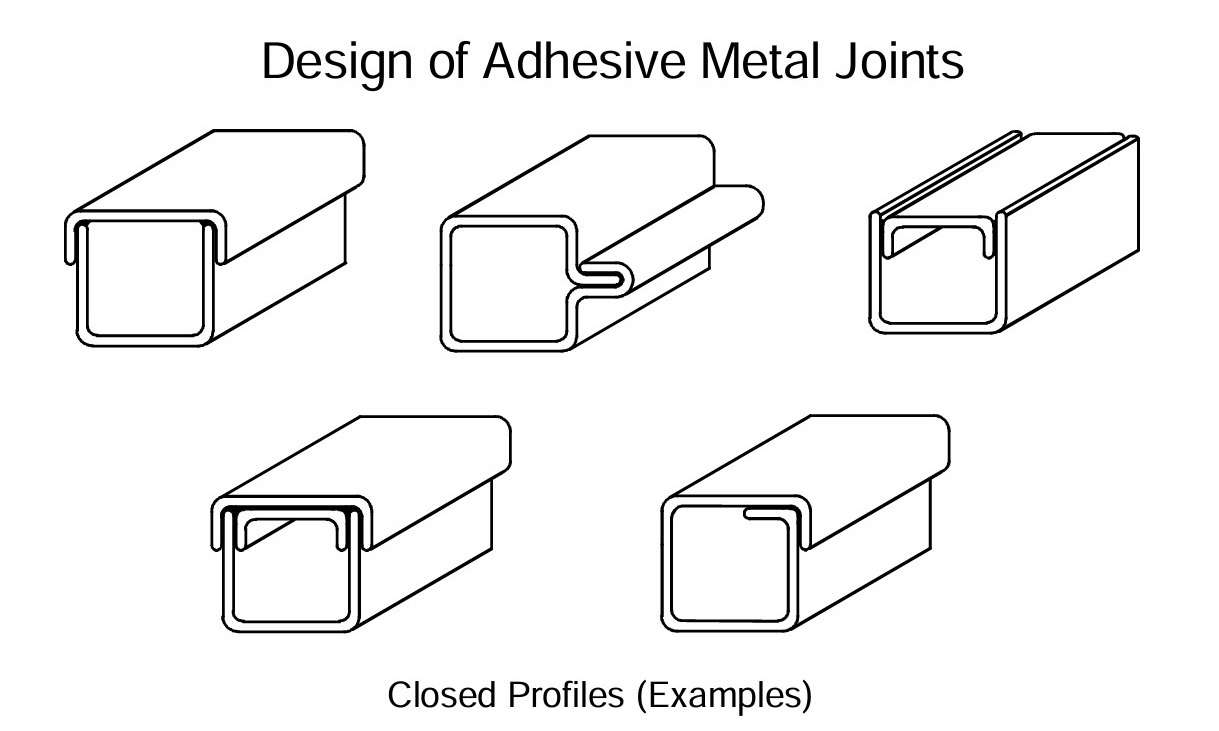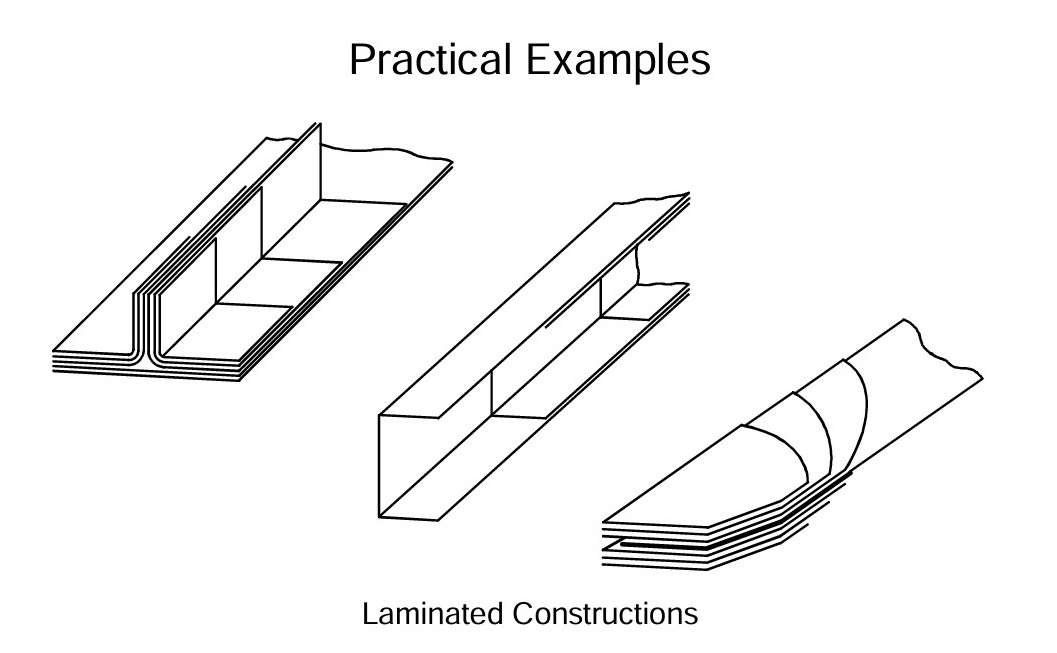Design of Adhesive Metal Joints
Basic Types of Loadings of Adhesive Joint Geometries
The adhesive joint has to be specially optimised for adhesive joining in order to have a joint of optimal strength. Of the possible loading types which an adhesive joint can be subjected to, it is most suited for shear, torsion and compressive loads. Tensile and in particular cleavage or peeling forces should be avoided.
Design types
Design types which avoid peeling stresses in adhesive joints of metals are illustrated in Figure 2.
Figure 3 illustrates further possible designs for constructing overlapping adhesive joints. Scarf joints are most suitable for tensile-shear loading since the load distribution is favourable. These joints can, however, be used only for large joint part thicknesses and are complicated to manufacture.
Examples for Joint Designs
Designs which have proved most successful for corner joints, closed-sectioned profile joints and tube joints are illustrated in Figure 4, Figure 5 and Figure 6.
The examples of closed profiles
While joining tubes of different coefficients of thermal expansion adhesively, the tube with the larger expansion should be designed to be on the outside.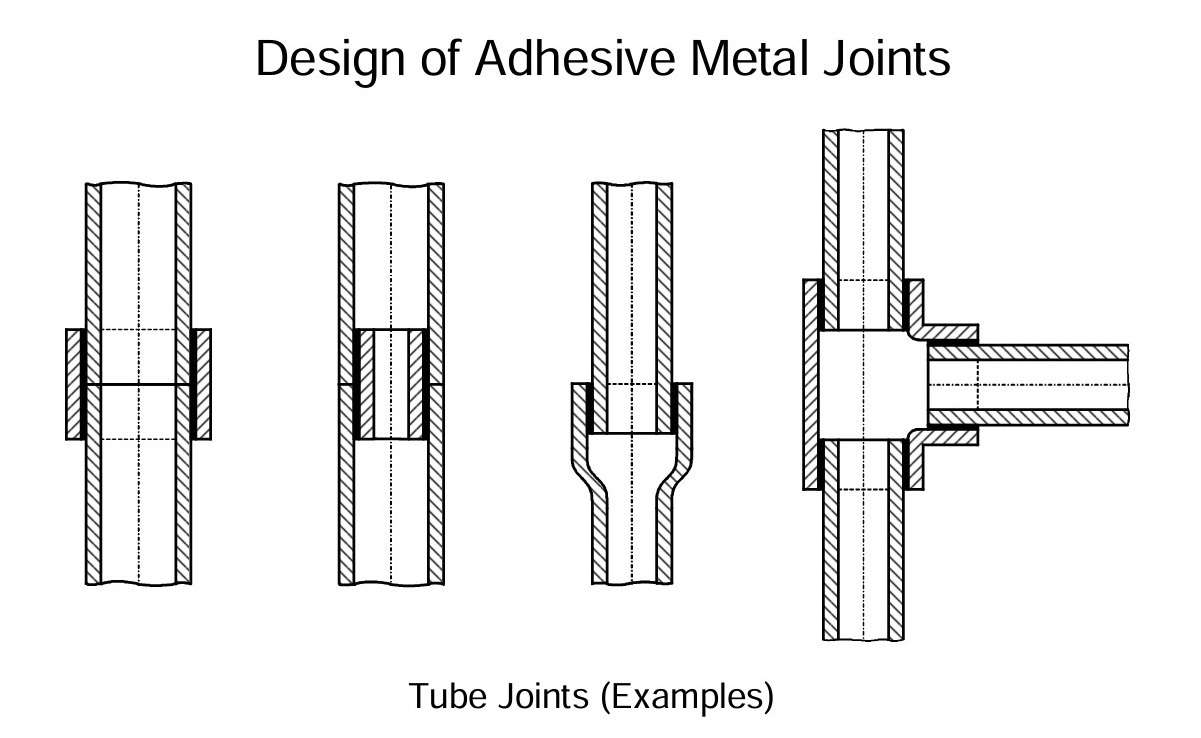 Figure 6 – Tube joints
Figure 6 – Tube joints
Layered or laminated joins
Typical application examples for adhesively joint metal constructions are layered or laminated, shell and sandwich constructions.
Figure 7 – Laminated constructions
 Figure 8 – Shell constructions
Figure 8 – Shell constructions
Supported Core Sandwich Constructions
Sandwich constructions are only possible with adhesive joining.
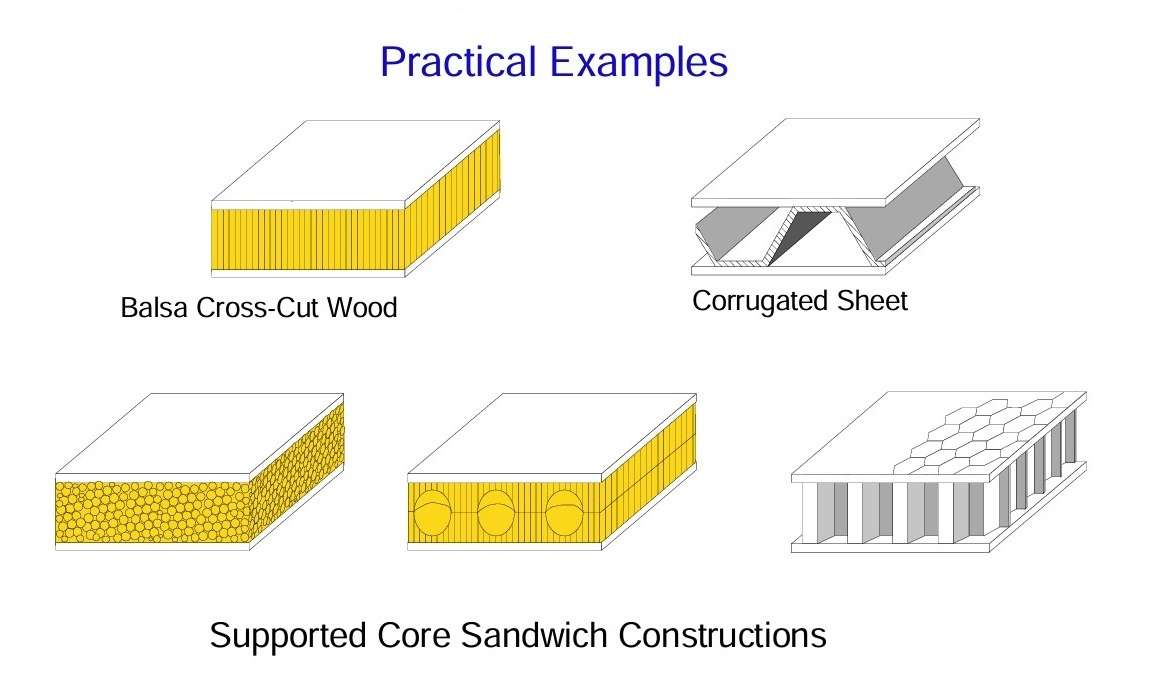 Figure 9 – Supported Core Sandwich Constructions
Figure 9 – Supported Core Sandwich Constructions
The source:
TALAT Lecture 4703 – Adhesive Joints – Design and Calculation / Lutz Dorn – European Aluminium Associatoins – 1994
